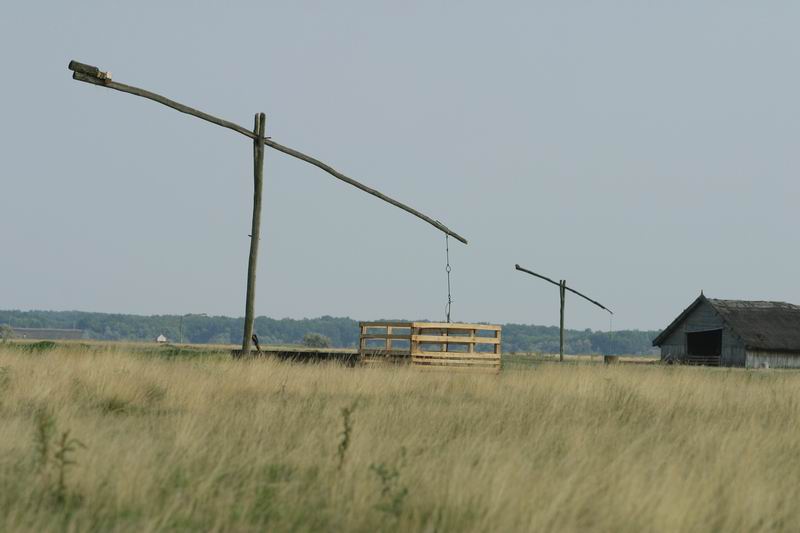From Serbia I headed northwards into eastern Hungary. The towns, such as Szeged and Debrecen, are clean and orderly, the centres displaying the wealth and power of a bygone era, from the age of empire. And though everything is neat and tidy (they even have extensive cycle lane networks, something we haven't managed to set up in Britain) it lacks the depaysment I've grown accustomed to and therefore marks the beginning of my return home to 'civilisation'. Here supermarkets are stacked with the exact same products and brands as in the rest of western Europe; cars ignore the fact that they are bigger, tougher and less mortal than mere pedestrians and obey traffic rules; and wide, uncluttered pavements and pedestrian malls make for effortless, carefree strolling. In a strange way I'm missing Chinese supermarkets with their aisles of freezers filled with innumerable types of dumplings and where you can buy live terrapins (though not as pets); I recall with fondness having to take my life into my own hands every time I crossed the road in Cairo; my taste buds still tingle at the thought of streetfood from around the world - Mexican tamales, Bolivian empanadas and Laotian sticky rice with something-grilled-ona-stick (best not to ask what it was); and I like to reminisce about the constant obstacle course that constitutes walking in an Indian town, having to continually look out for potholes, open sewers, cowpats or fresh piles of human excrement. (On second thoughts scratch that last one.) Hungary does at least have one exotic thing going for it: its language. Totally unlike any of its neighbours and only distantly related to Finnish you can forget even trying to understand it. Plus, what I find quite astonishing, very few ordinary Hungarians seem to be able to speak another language, be it English, Russian or German (the latter being the most common). But luckily for me this ought to be the last country where language is a barrier and I can start being a bit more lazy, at least on that front.
In terms of landscape the east of the country s easy to describe: flat. Over half the entire country is taken up by the Great Hungarian Plain, also known as the puszta. Historically the area was mainly boggy marshland, but after the Tisza river, which flows through the plain, was controlled in the 19th century much of the land became available for agriculture and now huge fields of wheat and corn stretch to the horizons on either side as you drive through. The uniformity is broken by the odd farmhouse - low, thatched and very long - and the unique wells that have become a symbol of the region. Some areas of original marshland also remain, which have become havens for waterbirds, and where people still herd the characteristic Hungarian longhorn cattle. Although it might sound rather boring compared with the dramatic allure of the mountains, there is something calm and immense about the puszta, especially with the low cumulus clouds that emphasize the sense of distance by forming a fluffy 'lid'. I had a great day ccycling around the little field tracks amongst the old farms and ponds, and it wasn't until after my late lunch, when I sat back on my bike, that I realised how big the place is and how far I had ridden, a reminder that I feel even now as I sit here typing this post.
In terms of landscape the east of the country s easy to describe: flat. Over half the entire country is taken up by the Great Hungarian Plain, also known as the puszta. Historically the area was mainly boggy marshland, but after the Tisza river, which flows through the plain, was controlled in the 19th century much of the land became available for agriculture and now huge fields of wheat and corn stretch to the horizons on either side as you drive through. The uniformity is broken by the odd farmhouse - low, thatched and very long - and the unique wells that have become a symbol of the region. Some areas of original marshland also remain, which have become havens for waterbirds, and where people still herd the characteristic Hungarian longhorn cattle. Although it might sound rather boring compared with the dramatic allure of the mountains, there is something calm and immense about the puszta, especially with the low cumulus clouds that emphasize the sense of distance by forming a fluffy 'lid'. I had a great day ccycling around the little field tracks amongst the old farms and ponds, and it wasn't until after my late lunch, when I sat back on my bike, that I realised how big the place is and how far I had ridden, a reminder that I feel even now as I sit here typing this post.

1 comment:
Wow! Really sounds like you're coming to the end of your travels. . . so is there any feeling of relief in the familiarity of the "Western world" mingled with the nostalgia?
Good ol' India. . . I remember the obstacle courses so well!
Post a Comment